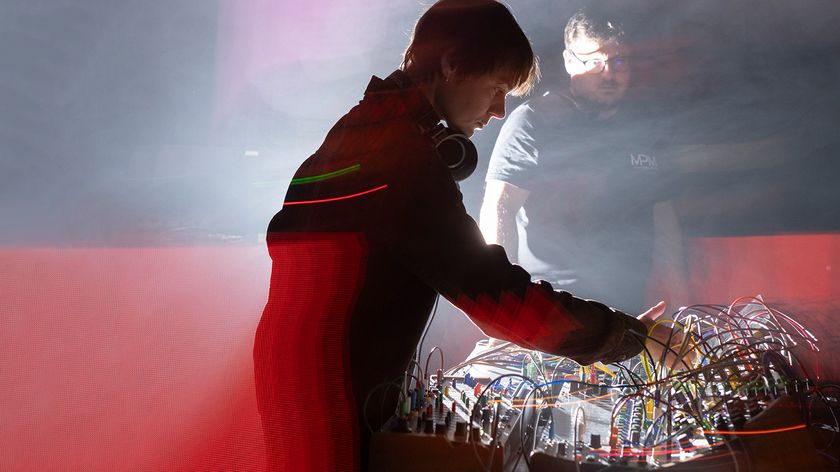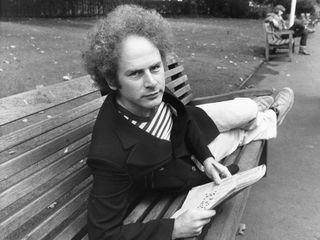
Interview: Art Garfunkel talks about his new greatest hits CD, The Singer
On the subject of his upcoming, career-spanning retrospective two-CD collection, The Singer (due out 28 August), Art Garfunkel can't hold back his enthusiasm. "I really love my album," he says with a laugh. "I’m so unjaded. If singing ever meant anything to me – and it is my identity, it’s my life – then The Singer is what I did on earth."
The 34-song set, which includes classics from his legendary partnership with Paul Simon, as well as some of his own solo hits and teamings with artists such as Graham Nash and David Crosby, James Taylor, Maia Sharp and Buddy Mondlock, among others, was a labor of love project for Garfunkel, who hand-picked the tracklisting.
“The exciting thing for me was combining Simon & Garfunkel cuts with Artie Garfunkel solo cuts," he says. "I’ve made 12 solo albums; I’ve had a lot of great nights in the studio with some terrific musicians who have really opened up the voice. So, when I look back at my own body of work, combined with the cream of the Simon & Garfunkel stuff, I’m left with a lot of cards to play."
In his own idiosyncratic way, Garfunkel likens his song-selection process, something he calls "the game for the ear," to that of a ball club manager plotting a starting lineup. "It's very similar," he says. "You look at what you have and go, ‘Who’s my shortstop to lead off?' You serve up to the ear – this is my compilation style – exactly what it wants to hear next. There’s a natural, organic flow. And what you get is, ‘This singer, Artie Garfunkel, can sing. And he can do it from tune to tune, with and without the partner.’"
Describing his approach to singing, one which has landed the Forest Hills, New York, native in the Rock And Roll Hall Of Fame (along with former partner Simon), Garfunkel says, “Music is play. You play with the notes, you play with the sounds. If nobody is listening and you’re private, and you have a nice room with reverb, you can play with the tone of your own voice as you sing. You can change that tone and move into the category called ‘beautiful.’ You can move into the category called ‘This sounds like James Dean looked on the screen.’ There’s something cool going on in the sound, and you explore that stuff. You’re chasing after charisma."
On the following pages, Art Garfunkel talks about six of the tracks on The Singer, a package that he calls "just the right proportion of Simon & Garfunkel songs to solo recordings. I'm extremely proud of it."

The Sound Of Silence
“Ahhh, what a tune! Sound Of Silence has more melodic, genius, simple power than I ever realized. As the years go by, there’s something extraordinarily hooky about that simple melody – I didn’t know that. I knew it was a good-sounding record when it emerged.
“From a radio contact business in Cocoa Beach, Florida, it became a call-in favorite. It made the promotion man call the home office in New York and say, ‘It’s been a year now, and they won’t quit over this one folky song from a group called Simon & Garfunkel. The album isn’t selling, but this one tune just won’t quit with its appeal.’
“The home office overdubbed electric bass, drums and the electric 12-string guitar, which was the sound of the era if you know The Byrds and Mr Tambourine Man. We were using electric 12-strings that season. They did this while we were away in Europe. I had no power, no creative leg to stand on, so by definition I was just a bemused listener: ‘Whatever the label is going to do, OK, cross your fingers…’ It’s not like I could have a point-of-view like, ‘How dare you! You ruined my record’ – I could never go down that path.
“I heard it and thought, OK, the rhythm slips a bit between the fourth and fifth verses, the overdubs aren’t exactly in sync, but the sound is commercial. Who knows? You can’t figure out the market.
“Now it becomes a giant world-wide hit. What can I say? I knew the song within. It was the sixth song Paul ever wrote. He would come to my apartment on Amsterdam Avenue, where the roaches were in the kitchen, and he’d play me his songs. When he got to this one, I said, ‘Best one yet! If that’s not a commercial hit record, I don’t know what is.’”

All I Know
“This song was cut for the Angel Clare album in the early ‘70s, with Roy Halee as my co-producer. I had just split from Simon & Garfunkel, and I was in San Francisco getting married.
“All I Know is a Jimmy Webb song, and I have always been enamored of what a gifted piano player, chord-meister and songwriter he is. I loved that tune, and I went to town on the production. In my current ears, I overdid it.
“The All I Know I put on this album is two minutes and twenty seconds, a shorter version years later, when Jimmy came into the studio, and the two of us – one piano and one vocal – put down another All I Know.
“What’s interesting to me is that it’s the stripped-down version that allows the singer to show his chops and allows the song to emerge even stronger.”
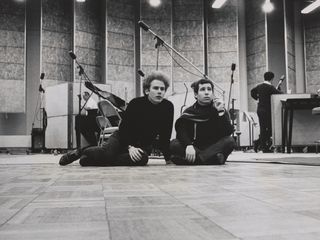
Bridge Over Troubled Water
“Ohhh, what a song! I’m getting Yiddish – ‘Oh, what a song!’ The 2000 Year Old Man knows this song.
“I’m so proud of it, obviously. I killed to get that first verse just right because I knew where it was going. I recorded it back-to-front – the vocal on the last verse went down on tape first. The pole vault that is the last verse is one of life’s great experiences for me. I didn’t know I could be such an Olympian and go over the vault. The second verse is a set-up for the last, and I found it easiest to sing.
“What can you say about Bridge Over Troubled Water? It’s a brilliant Paul Simon hymn with a Baptist flavor that he showed me one day in his East End Avenue apartment, and I fell out for it.
“It’s maybe his best song. When he sang it for me, he had to do it in his very beautiful flutey falsetto. I remember saying, ‘Gee, that’s so pretty. We never exploit your falsetto; that’s another color we can play. Perhaps this is the song.’ And Paul said, ‘No, no, I wrote this for you, Artie.’ And I thought, OK, cool. I’ll take it very happily. And I went to town on it like a hungry man eats steak.”
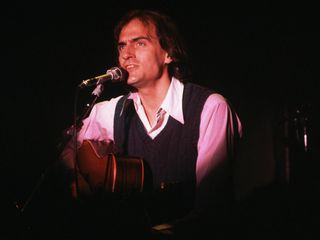
(What A) Wonderful World, featuring James Taylor and Paul Simon
“I played the tag-along here. I remember well very being the nice guy. ‘You know you can sing, Artie,’ was what I was thinking. Just being the cooperator, the cement – with every package, somebody has to be the cement.
“Back in my college days, at Columbia College, we had an octet, the Kingsmen. We did jazz-inflected, standard stuff. Well, I had the middle part, the part that sounds ugly by itself, but it makes the chords work.
“I reached back to that experience of my college days to serve up what is an odd middle part in the arrangement. We met at Paul’s, and we were three gentlemen trying to maximize our goodwill and our professionalism. We all think the world of one another, James and Paul and I. We know we’re killer musicians, and so you lead with that respect.
“Musicians are people who play. We play with notes and chords. We’re children who play. You bring that spirit to the rehearsal, and the rest is ‘Stay cool. Don’t make a big deal of anything.’”
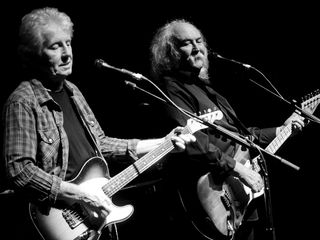
Breakaway, featuring Graham Nash and David Crosby
“It’s like love – when love spills over. David and Graham were staying at the Chateau Marmont, right across from where Laurie Bird and I were staying. I was a man very much in love, making, with [producer] Richard Perry what I thought was the supreme ‘make out’ album. We wanted our fade-outs to be long, so love makers could lull away in their dance.
“It’s creamy sounding. Brian Wilson knows this, like when he puts candy-coated sounds on his records. This is the God we serve, us record producers.
“So Nash and Crosby, they know how to make commercial-sounding records. They know what they can do. I approached them since they were 12 feet away from my backyard. We hung out together, the lads and I. A lot of fun.”

My Little Town
“It was in the mid-‘70s. Paul was making Still Crazy and I was making Breakaway. We had an eye on the charts, and we were both trying to establish our record careers as solo artists. So, in order to do that, we thought that we’d put one Simon & Garfunkel tune on both of our albums.
“I remember going into the recording studio, and it was really [producer] Phil Ramone in the lead; it was his home studio. Truthfully, it was a record that is not my style, so I was distinctly not producer, which is rare – I usually like to take control as to how a record is going to sound.
“This is a much dryer record, a stomping, tougher, darker record than I usually make, but that’s exactly what Paul and Phil were saying; ‘That’s what we want to do to you, Artie. You sing too many sweet songs.’ So that’s My Little Town.”

Joe is a freelance journalist who has, over the past few decades, interviewed hundreds of guitarists for Guitar World, Guitar Player, MusicRadar and Classic Rock. He is also a former editor of Guitar World, contributing writer for Guitar Aficionado and VP of A&R for Island Records. He’s an enthusiastic guitarist, but he’s nowhere near the likes of the people he interviews. Surprisingly, his skills are more suited to the drums. If you need a drummer for your Beatles tribute band, look him up.
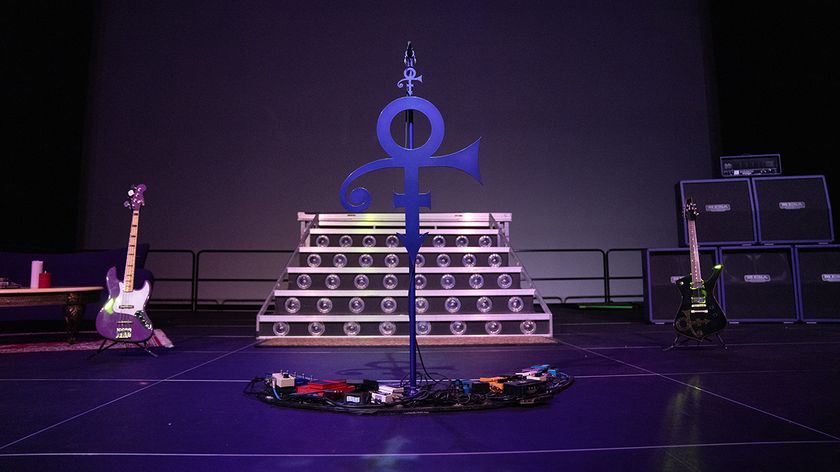
“The Netflix documentary will not be released”: Prince’s estate claims a “big win for his legacy” as it confirms that the completed but controversial 9-hour documentary about him won’t be broadcast
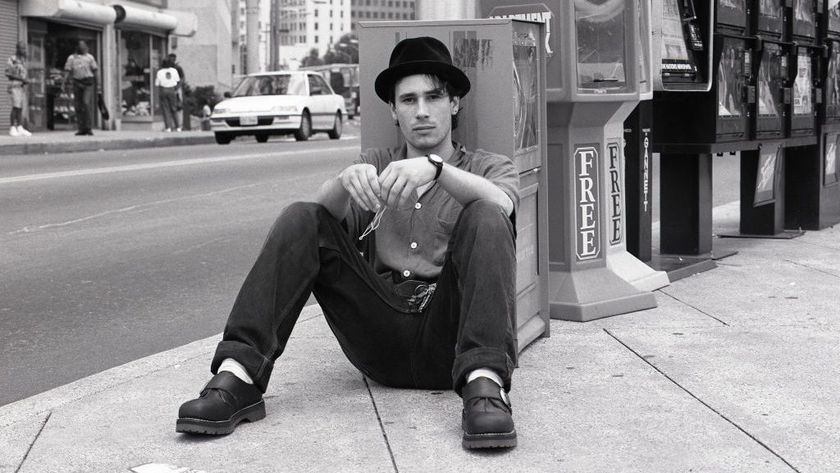
“It’s just about being alive. It’s about the voice carrying much more information than words do”: The power and intensity in Jeff Buckley’s greatest song

“The Netflix documentary will not be released”: Prince’s estate claims a “big win for his legacy” as it confirms that the completed but controversial 9-hour documentary about him won’t be broadcast

“It’s just about being alive. It’s about the voice carrying much more information than words do”: The power and intensity in Jeff Buckley’s greatest song
Most Popular








